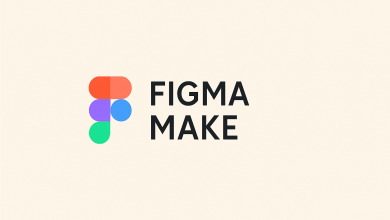
Introduction
The evolving landscape of contract review.
It’s the end of a fiscal year, and your sales team is trying to wrap up their deals as soon as possible to close out this year strongly. One of your sales team’s clients insists on using their standard paper, and if we stand a chance at closing this deal before the end-of-year deadline, we’ll need to close this deal and sign it by 5:00 pm today. The Vice President of Sales wants a “high-level” review, noting only potential “deal-breakers”, but the client’s paper is over 100 pages with exhibits, and they’re in an industry with which you’re not very familiar. What do you do to successfully sign this contract today?
After some serious venting to the rest of the legal team about this last-minute request, the old me would’ve tried to plow through the contract as quickly as possible to point out any significant issues while worrying I’m potentially missing out on key issues buried somewhere in the contract. Tedious. Time-consuming. Susceptible to errors. Inconsistency amongst reviews. Costly. Honestly – scary. These are just a few challenges attorneys face in reviewing and editing contracts, especially under this added end-of-year pressure. However, in recent years, the legal industry has significantly progressed in utilizing generative artificial intelligence (or “GenAI”) in reviewing, negotiating and managing contractual agreements. One question though: “What the heck is GenAI?”
Rise of Generative AI and its potential impact on legal operations and contract management
While the concept of artificial intelligence in general has been around since the 1960s, it was the advancement of Natural Language Training (“NLT”) and Machine Learning (“ML”) in the last 20+ years that has allowed more practical and real-world uses in reviewing contracts. GenAI has gone from simple tasks like document classification, routing contracts for approvals and basic keyword searches to more advanced tasks like analyzing complex patterns, cross-referencing documents and understanding unstructured data more thoroughly, moving beyond simple rule-based systems.
GenAI offers significant advantages in contract review by enhancing efficiency, accuracy and risk mitigation; however, it requires careful consideration of its limitations and responsible implementation. Here’s what you need to know about GenAI and how it can help you make this ridiculous deadline – plus a few other interesting considerations.
Understanding Generative AI in contract review
“What is Generative AI?” At a high level, GenAI can be broken down into four types of learning: (1) Unsupervised Learning, (2) Semi-Supervised Learning, (3) Supervised Learning and (4) Self-Supervised Learning.
- Unsupervised Learning: GenAI models often start with unsupervised learning to explore unlabeled datasets and identify inherent structures and relationships within the data. This allows the model to learn from the data’s inherent properties without explicit guidance.
- Semi-Supervised Learning: In some cases, GenAI models also leverage semi-supervised learning, where a small amount of labeled data is used alongside a larger dataset of unlabeled data. This helps the model to refine its understanding and generate more accurate results.
- Supervised Learning: While not the primary approach, supervised learning can be used in GenAI, particularly for fine-tuning a pre-trained model for specific tasks or to improve the quality of the generated output. For example, a model pre-trained on text data might be fine-tuned with labeled examples to generate more coherent and contextually relevant text.
- Self-Supervised Learning: A variation of unsupervised learning called self-supervised learning is also used. In this approach, the model learns from the data by predicting parts of the input based on other parts, creating its own labels.
Specific applications and use cases in contract review. “Great – so what? How can these types of GenAI help me make that 5:00 pm deadline?”
The following features may be the most valuable for this particular use case, since you can use them to help you quickly focus on the key terms and specific concerns of your business partners to meet that 5:00 pm deadline. If you do not have time (or leverage) to make certain changes, then these summaries, comparisons and analyses will help you to at least clarify the risks of accepting the proposed language “as-is” to your VP of Sales (and other business partners).
- Automated Summarization and Clause Extraction: Quickly extract and summarize key terms, obligations, dates and other specific information like pricing, expiry dates, auto-renewal clauses, indemnification clauses and limitation of liability clauses from contracts.
- Risk Detection and Compliance: Flag potential risks, ambiguous clauses, non-compliance issues and ensure adherence to company standards or regulatory guidelines.
- Clause Comparison and Analysis: Identify discrepancies and deviations between contract versions or against standard clauses, like comparing an indemnification clause against standard SaaS agreement provisions.
Additionally, GenAI tools offer great assistance in more long-term needs that are not a “fire drill” at the end of the quarter or year. The more lead time your legal team is given, the more flexibility you will have in choosing the GenAI tool options that best suit your practice. Below are great features of GenAI that can help you ensure your client is protected if you have more time to negotiate these agreements while spending less time reviewing each agreement. This will give you and your team more time to review these agreements quickly, focus on key issues and handle a higher volume of contract reviews.
- Drafting Standard Clauses and Tailored Provisions: Generate initial drafts of common provisions or create customized clauses for unique scenarios. This allows your team to organize its templates and language repositories better, allowing for more consistency in your team’s use of the company’s pre-approved, standard language.
- Redlining Assistance: Propose specific redlines and alternative clauses based on predefined company policies or industry standards. With the GenAI tool handling the heavy lifting and quickly reviewing an agreement line by line, this tedious process can be dramatically sped up while generally creating more consistency among contract reviews. This will allow your team to focus on higher-level and riskier issues in the agreements.
- Contract Negotiation Support: Analyze past agreements and outcomes, flag risky clauses and suggest alternatives according to a company’s clause library and standard playbook. Gone are the days of “I could have sworn I worked on a deal like this a few years ago. Let me check my old emails and get back to you never.” With a quick AI search of your old agreements and language bank, you can assess the risk of accepting the proposed language “as-is” or quickly propose alternative language.
- Generating Playbooks: Look through a corpus of contracting material to generate playbooks based on existing contracts, templates and escalation requirements. Why reinvent the wheel by creating templates and forms when you can start with forms that use industry-standard language updated to comply with the most current laws and regulations?
- Analyzing New Regulations: Extract, interpret and pinpoint changes between various iterations of a regulation to identify the changes that should be made in an organization’s contracts to comply with new regulations. These changes will be easier to interpret, follow, manage and potentially audit later when you have all previous versions that you can run a red line to see those differences quickly.
Challenges and limitations
“This all sounds great—please take my money!” Before committing to using GenAI for contract review and management, we need to consider certain challenges and limitations.
Data Quality and Reliability
The accuracy of AI output depends heavily on the quality and representativeness of the training data. We must consider the types of data (i.e., contracts and sample language) that are input into a GenAI tool and how the GenAI tool uses that data to learn and produce any output. If the sample size of contracts and contractual terms included in the GenAI model is outdated, limited in industry scope or just plain wrong, then such data may not produce the correct output for your contract needs.
Potential for Bias
AI systems can perpetuate biases in their training data, raising concerns about fairness and ethical implications. GenAI’s output is only as good as the input from which it learns. If the input is limited in scope or skewed for one side (possibly not your side), the output could be similarly skewed, perpetuating that underlying bias.
Ethical Considerations and Responsibility
Confidentiality and Data Security: Protecting sensitive client information when using cloud-based AI tools. This topic alone could lead to another lengthy discussion regarding protecting a company’s confidential information and other sensitive information. However, parties must be cognizant of the types of data being uploaded into a GenAI model and be careful not to upload information that should not be disclosed (e.g., trade secrets, personally identifiable information).
Attorney Competence and Duty of Supervision: Ensuring lawyers maintain their expertise and critically assess AI outputs. Simply because a GenAI model spits out some applicable edits or proposes alternative language, it is still incumbent on the attorney to use their knowledge, experience and expertise in the field to ensure that the proposed language is applicable and appropriate for your client. Otherwise, we really will be replaceable by AI sooner rather than later.
Integration with Existing Systems
Challenges in seamlessly integrating AI tools with existing Contract Lifecycle Management (CLM) systems and workflows. Choosing the right GenAI tool for your specific needs may be easiest when your company starts from scratch, but what if you already have an existing CLM tool and a large repository of contracts? A key consideration when choosing the right GenAI tool is that the tool works well with your current CLM systems and workflows. If it does not, you could be missing some key historical data within your company that could help the GenAI and potentially waste time double-checking whether the correct data was used for this purpose.
Best practices and responsible implementation
“Got it. What should I do to benefit from GenAI – like now?!” If you’re going to commit to using GenAI, you’ll need to make a similar commitment to ensuring you use it correctly, responsibly and ethically. At a minimum, you should consider implementing these processes:
- Human Oversight and Expertise: Emphasizing the complementary role of AI, requiring human review and final decision-making. I cannot stress this enough – your oath to represent your client to the best of your ability means something here. Do not take that oath lightly and sign it over to artificial intelligence so quickly and broadly. You should always thoroughly review and think through any output you get using GenAI in general and what it means to your client.
- Data Governance and Security Protocols: Establishing robust security measures, data encryption, access controls and auditing procedures.
- Addressing Bias and Fairness: Mitigating bias through careful data curation, monitoring and potentially advocating for transparency in AI development.
- Transparency and Disclosure: Informing clients about using AI, especially when it affects significant decisions or fees, and ensuring clear disclaimers.
- Continuous Learning and Skill Development: Encouraging legal professionals to adapt to new technologies, understand AI capabilities and limitations, and focus on higher-value work.
- Developing Internal Policies and Guidelines: Creating clear policies for the responsible use of generative AI in contract review.
- Selecting Appropriate AI Tools: Choosing platforms specifically designed for legal use cases with a focus on data privacy, security and accuracy.
The future of generative AI in contract review
“What now?” For starters, you get to meet that ridiculous 5:00 pm deadline to sign that deal. You were able to use GenAI to scan the 100-page contract, pointing out any major issues, as well as suggesting alternative language for those issues, and run a risk analysis report to present a “risk score” for signing the agreement “as-is” – just like your VP of Sales requested. In the long run, the possibilities of GenAI and its advancements are impressive to say the least.
- Continued advancements in AI capabilities, including increased accuracy, more sophisticated legal reasoning, and agentic AI.
- Potential for even greater automation and efficiency in contract lifecycle management.
- Evolution of legal roles and the need for new skills and expertise.
- Ongoing dialogue and adaptation of ethical and regulatory frameworks.
- The competitive landscape among legal professionals, with those who embrace and responsibly integrate AI gaining an advantage.
Conclusion
The whole contract review process has been changed with GenAI, whether we like it or not. Those who truly understand and embrace it will remain when those who don’t – well…aren’t. It’s as simple as that. This does not mean that we must hand the keys to the car to GenAI just yet…it’s just in diapers, for Pete’s sake! In all seriousness, GenAI is in its infancy, so we must truly respect its power and take seriously our responsibility to use it ethically for the benefit of our society. If we can do that, the possibilities in this field are limitless.





